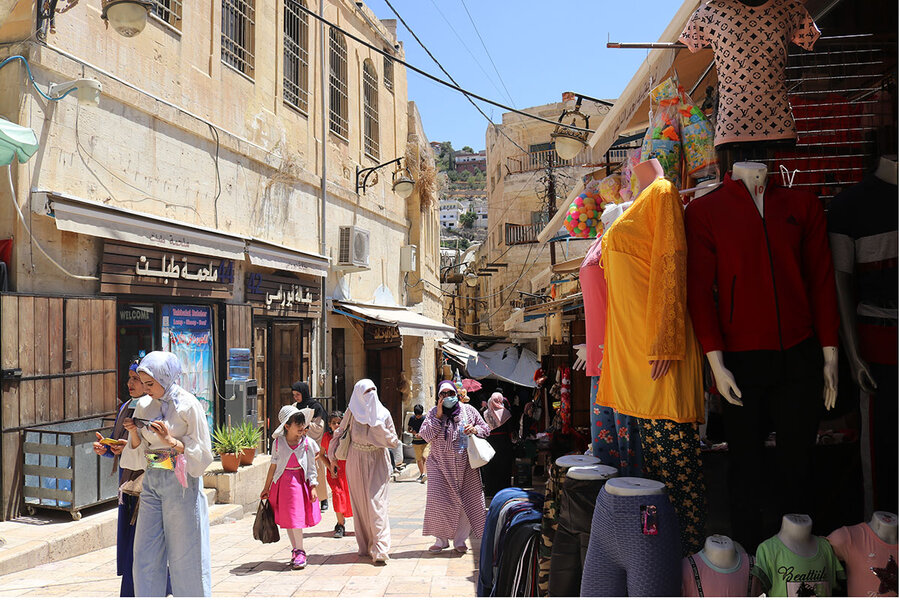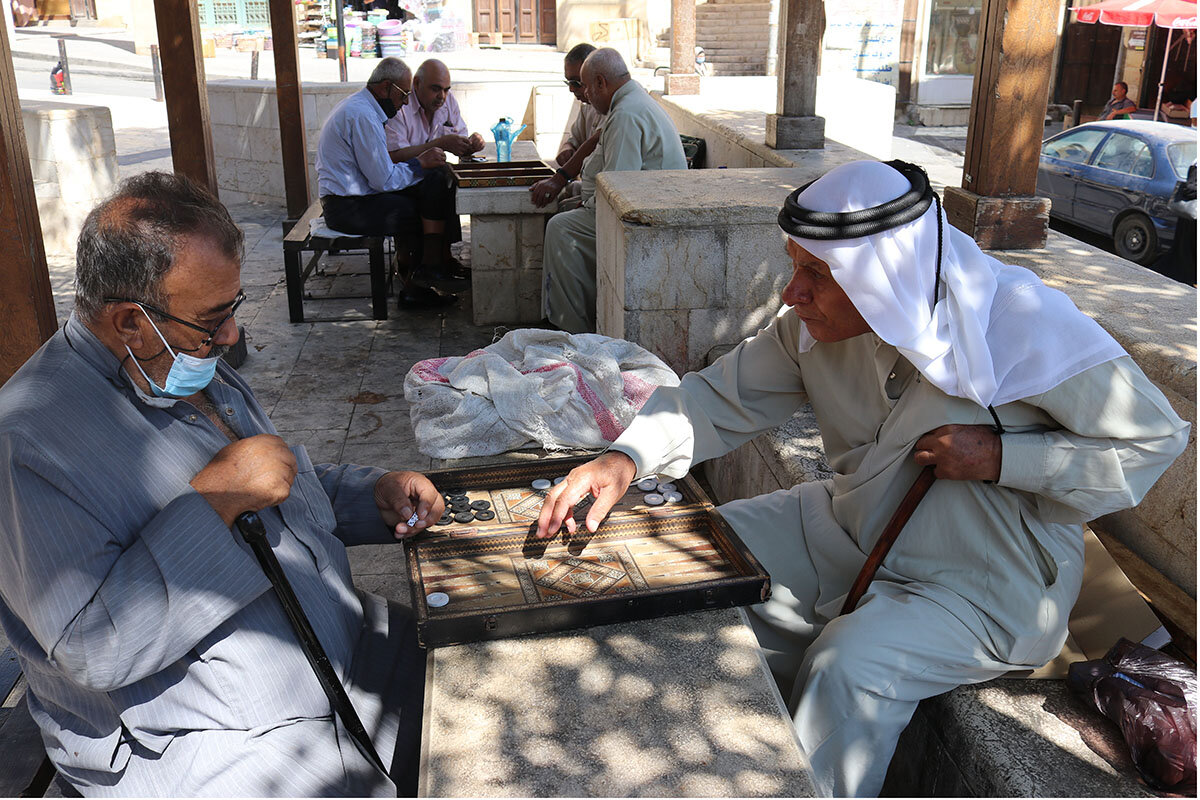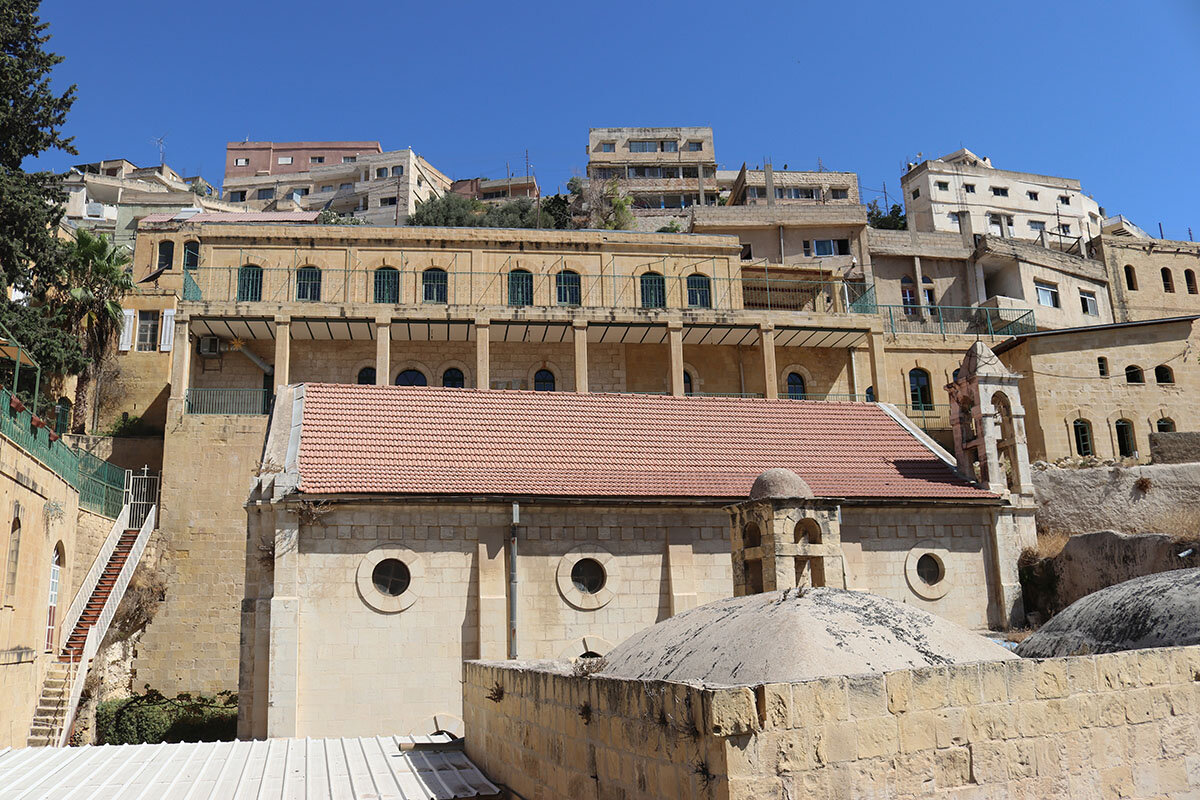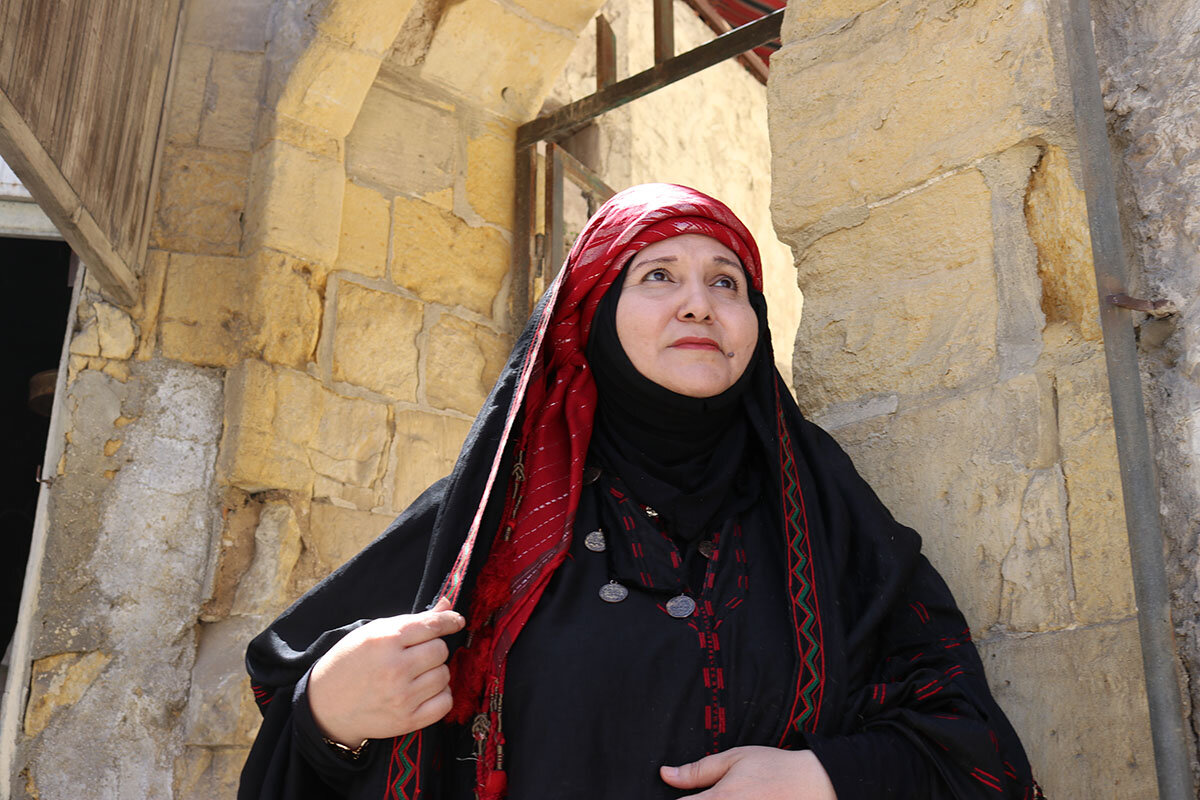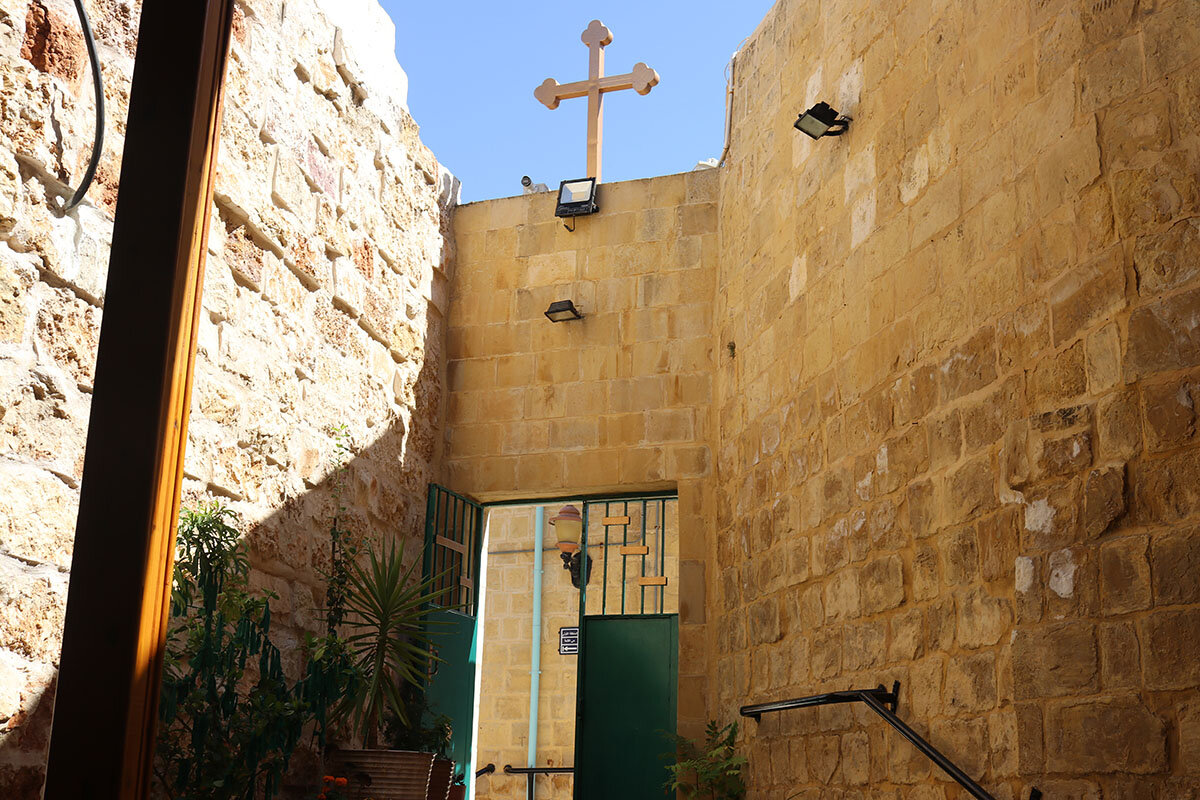At newest World Heritage Site, harmony and hospitality are in the stones
Loading...
| SALT, Jordan
Welcome to the world’s newest UNESCO World Heritage Site, a breezy hillside town perched above the Jordan Valley that is celebrated for, well, its legendary hospitality.
In Salt, history and economics have helped create a unique mix of cultures and faiths and a harmony of yellow-gold stone buildings and community.
Don’t believe it? Simply ask the city’s elders.
Why We Wrote This
In Salt, Jordan, the world’s newest UNESCO World Heritage Site, building practices and lived history have created a showcase for interfaith and communal harmony – and hospitality.
You can find them every day gathered in the Ain Plaza, formerly the site of fresh springs and now the town square in the twin shadows of Salt’s Great Mosque and Anglican Church.
They will gladly tell you how their hospitality and way of life were passed from generation to generation – if they have time.
For most of the day, they huddle around stone tables locked in intense games of backgammon and mancala, exhibiting the steely concentration of professional athletes.
They say they welcome the UNESCO designation as a chance to share what they call “hospitality and harmony” with the world.
“Here we welcome all, and we embrace every person,” says Abu Ali, awaiting his turn at backgammon. He pointed to his compatriots of different faiths and tribes embroiled in matches.
“We don’t see Muslim, Christian, tribes, or urbanites – we see each other’s humanity, and the humanity in all who visit.”
Dating back to the Iron Age, Salt is located strategically on the trade and pilgrimage routes between Damascus and Jerusalem, and between the Mediterranean Sea and the Arabian Peninsula. The agricultural village grew into a flourishing hillside city in the 17th, 18th, and 19th centuries, attracting residents from across the Levant, Turkey, Arabia, the Caucasus, and west Asia.
The constant, diverse flow of visitors and merchants created neighborhoods in which each street and hill had a mix of Christians and Muslims – Palestinians, Syrians, Turks, Circassians, Chechens, and members of local tribes all building their homes together.
No need for hotels
For centuries, Salt families would house and feed travelers, including merchants, Christian pilgrims on their way to Jerusalem, or Muslims heading east for the Hajj – offering at least three days of lodging, no questions asked.
Not a single hotel was built in the town, as it was considered “shameful” not to host a guest in one’s home. Only in the past two years have guest-houses emerged; but the idea of a guest paying for lodging is still highly controversial.
“Please have lunch with me,” strangers told Jordanian visitors and a reporter, during a visit in mid-August.
In its announcement in late July that Salt had been added to the World Heritage list, UNESCO highlighted the city’s unique makeup as a “Place of Tolerance and Urban Hospitality.”
“In Salt, there is not a single area here that is segregated by race, religion, or origin,” says former Mayor Khaled Al Khashman. “This is very rare in this region and, historically, rare in the world.”
The town’s traditional architecture has long encouraged community.
Most of Salt’s yellow sandstone homes consisted of a single room with a domed roof, with two or four homes sharing a communal courtyard, walls, rooftop, and entrance.
Families would sit in their communal courtyard, cooking or drinking evening tea together while their children played. Neighbors shared food, drink, and supplies, and took part in each other’s celebrations, religious holidays, and family milestones.
The layout meant neighbors were often closer than blood relatives.
“Our houses share walls, share roofs, share stairs – there is no physical separation of buildings and the families that inhabit them whatsoever,” says Salt historian Ibrahim Masri.
“As a city we are completely connected, we beat as one heart although we all come from different origins.”
Salt resident Nadia Abu Samen, a Muslim, restored one of these compounds, she says, to “preserve the Salt of my childhood.”
She says her mother was raised by her family’s Christian neighbors, and her uncles and aunts were given Christian first names to honor their neighbors.
For the past decade Ms. Abu Samen has carefully preserved an abandoned compound of four joined rooms – two homes belonging to Christian families, two homes belonging to Muslim families – and turned them into a cultural center, exhibition, and cafe.
She traces Salt’s trademark harmony to the “uniform simplicity of traditional life,” which she and others now share with visitors from the United States, Europe, Asia, and the Persian Gulf.
“People today love experiencing our heritage in Salt, because you return to a simpler life where there is no difference between me and you,” she says, pointing to a black and white photograph of families sitting in a communal courtyard. “There are no barriers.”
Eclectic architecture
Salt’s community-building architecture is itself a “melting pot.”
When the Ottomans decided to make Salt an official governorship and administrative capital for then-Transjordan in the 1860s, authorities allowed local leaders to select the style in which the new government buildings would be built.
From books and paintings, Salt’s elders cherry-picked from a mixture of architectural schools, creating an eclectic blend of Baroque, European Art Nouveau, Ottoman, Byzantine, Neo-Colonial, and Gulf Arabian styles.
Salt residents then chose local yellow sandstone – its soft texture easy to carve into curves, domes, arched windows, Corinthian columns, flowers, and other designs – for this new urban blend of East and West.
Shortly thereafter, all buildings and shops took on this new architectural style, transforming Salt into a golden town of arches, columns, and domes that would be at home in Italy or Istanbul.
Buildings were erected in close proximity: The Great Mosque and the Anglican Church share a stairway; the Latin Church and the smaller mosque are meters apart.
Most of these buildings – around 650 houses, shops, mosques, churches, schools, guesthouses, banks – remain that way today, unchanged from Salt’s 19th-century glory years.
Multiple projects by the Japan International Cooperation Agency and U.S. Agency for International Development have aided in their restoration and encouraged a new generation to enter the tourism industry.
A hit with Jordanians
Since UNESCO’s announcement, hundreds of Jordanians have flocked to Salt – many of them visiting for the first time – to walk through its historic souk, or marketplace, and along its carefully marked out heritage trails.
Salt residents see this budding tourism as an extension of their traditional hospitality.
“Here, all that matters is how you treat others and that you are a good neighbor, not where you come from. Visitors really respond to this,” says Nagat Hyari, who has volunteered as a tour guide since 2015.
While history is an important window to the past, Salt residents say there is plenty on offer in the present.
“Archaeological sites and monuments are important, but here in Salt we also offer something unique – an intangible living heritage that is being practiced, protected, and shared with anyone who visits,” says Khaldoun Khreisat, director of the Salt Development Corporation, which renovates historic buildings and supports heritage-based projects.
“You can view heritage, but here you can live the harmony.”




